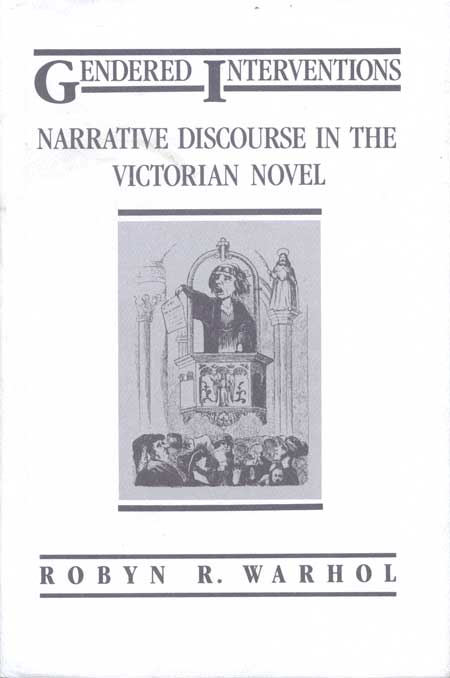Gendered InterventionsNarrative Discourse in the Victorian NovelRobyn R. WarholTheory and Interpretation of Narrative |
 1989 Literary Theory, Victorian Studies 246 pp. This title is no longer available in a traditional print edition. Click here for free access to the book’s full text. | |||
|
read the complete
text of the book • leave / read comments and critiques of the book • Explore More Women’s Worlds: The McGraw-Hill Anthology of Women’s Writing in English Across the Globe |
“closes the gap between formalist analysis of narrative and ideological and historical analysis of it . . . a rare achievement . . . exacting and fresh.” —Robert L. Caserio, University of Utah “Opens questions that theorists of narrative have overlooked. . . . [Warhol’s] conclusions are important to the development of feminist literary methodology.” —Shari Benstock, University of Miami A project in “feminist narratology,” Gendered Interventions is the first book to bring together these two vital movements in contemporary literary theory. Until now, most narratologists have ignored gender in their systematic study of the “narratee” in fiction; feminists—always interested in pointing to signs of gendered differences in texts—have studied “story” but not “discourse” in novels. They have used narratology’s insights to examine what is told, but not how it is told. Robyn Warhol argues that the two approaches are reconcilable, that feminism can give narratology a grounding in historical context, and that narratology can give feminism a precise method and vocabulary for identifying signs of gender in the way texts are written. Though the applicability of feminist narratology is by no means limited to one period or genre, Gendered Interventions illustrates the theory with reference to realist novels (by Gaskell, Stowe, Dickens, Eliot, Thackeray, and others) written in the mid-nineteenth century. The “interventions” in question are instances of direct authorial address, where “omniscient” narrators pause in their storytelling to speak to “you.” This study identifies a gendered difference in the ways men’s narrators are generally more self-consciously distancing, literary, and metafictional; whereas women’s are generally more engaging, earnest, and reality-directed in their interventions. Victorian women, with rare exceptions banned from all public forums, used interventions in realist novels to transmit serious political, social, and religious messages beyond their domestic circles. From the preachers who were their fathers, brothers, and husbands, they borrowed the exhortative address to “you,” a trope that was gendered masculine when delivered from a pulpit or platform, but came to be gendered feminine in fiction. Warhol argues that the feminine connotations of direct address in novels are responsible for the low critical reputation the technique has always held; and she asks why literary theory has avoided the trope until now.
| |||


 Robyn R. Warhol
Robyn R. Warhol